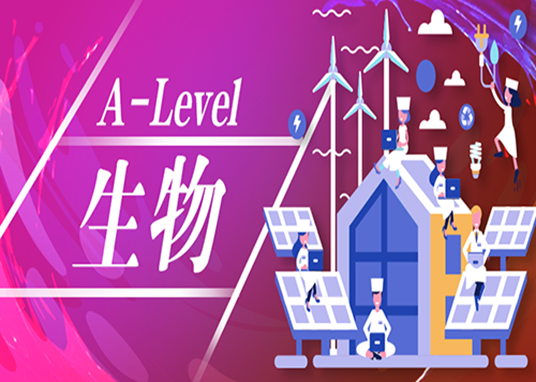当前位置:首页 A-level/IG A-level生物之光合作用详解
发布时间:2021-03-15 关键词:A-level生物之光合作用详解
摘要:在A-level所有科目中,A-level生物涉及的内容是相对较多的,有细胞、植物、动物等诸多领域,今天,新航道小编要带大家了解的是A-level生物考试中关于光合作用的相关知识点,希望能够帮助到大家。
在A-level所有科目中,A-level生物涉及的内容是相对较多的,有细胞、植物、动物等诸多领域,今天,新航道小编要带大家了解的是A-level生物考试中关于光合作用的相关知识点,希望能够帮助到大家。
一. 定义
最简单的层面一定要牢牢记住,光合作用是利用太阳的能量去生产葡萄糖,油脂等大分子有机物去储存能量。而呼吸作用则是相反,他是释放能量的过程,主要能量来源就是这些大分子有机物,葡萄糖,蛋白质,油脂。
二.发生细胞器
1.光合作用 chloroplast
2.呼吸作用 mitochondria and cytoplasm

三. 具体流程
那么我们先来仔仔细细的看看光合作用吧。光合作用可以分成两个大部分,light-dependent reaction and light-independent reaction。以下的文字我将用英文写,这样大家记住之后,就可以更轻松的写进试卷。
1.light dependent reaction (Non-Cyclic photophosphorylation)
-Accessory pigments in PSII absorb photons of light, and the energy is passed onto primary pigment (chlorophyll?).
-electrons on the primary pigment are excited (photoactivation) to a higher energy level causing them to escape and also causes the splitting (or photolysis) of water molecules.
(2H2O → O2 + 4H+ + 4e? )
-O2 diffuses out of the chloroplast and into the air. Also, the protons build up in the thylakoid lumen causing a gradient to be formed and The electrons in water replace the electrons that have left the primary pigment.
-The excited electrons are taken up by electrons acceptor, and are passed down electron carrier chain. They are passed from PSII to carrier proteins, where the energy is used to pump protons from stroma to lumen; then to PSI, where more light energy is absorbed by the chlorophyll molecules and the electrons is excited again.
-The Electrons then recombine with a proton to form a hydrogen atom, which is taken up by the hydrogen carrier NADP forming Reduced NADP.
-The combination of the water splitting and the proton pumping caused protons to build up inside the thylakoid lumen, generating a proton gradient across the thylakoid membrane. ATP is therefore photophosphorylated using the ATP synthase enzyme in exactly the same way as respiration.
light dependent reaction(Cyclic photophosphorylation)
-Electron photoactivated and instead of falling back into the photosystem and loosing energy as thermal energy, the excited electron is captured by electron acceptor.
-It is then passed on via a chain of electron carriers, during which, enough energy is released to synthesize ATP by chemiosmosis.
-Electron then returns back to Photosystem I. (refer the above diagram)
2.light independent reaction
-Occurs in the stroma of chloroplast and is called the Calvin Cycle. All the ATP and Reduced NADP is taken from the light dependent stage.
-Carbon dioxide binds to the 5-carbon sugar ribulose bisphosphate (RuBP) to form an unstable intermediate, this is catalysed by the enzyme rubisco. The intermediate is then broken down to form 2 molecules of (3C) glycerate phosphate (GP).
-GP is reduced and activated to form triose phosphate (TP). The ATP and NADPH from the light-dependent reactions provide the energy for this step. The ADP and NADP return to the thylakoid membrane for recycling.
-Most of the triose phosphate continues through a series of reactions to regenerate the RuBP using ATP and complete the cycle
-Some of the triose phosphate molecules combine to form glucose, starch for storage, cellulose for cell walls and sucrose for translocation around the plant.
-Others converted to glycerol and fatty acids to produce lipids for cell membranes or acetyl coenzyme A (CoA).
以上是A-level生物考试光合作用知识点的相关信息,更多关于A-level科目、备考等方面的内容,可以关注新航道广州学校锦秋A-level,锦秋A-Level是隶属于新航道国际教育集团的高端子品牌,专为有志于申请英国G5超级精英大学以及英澳高校的中学生设计,旨在帮助中国学生通过学习以更高的成功率申请到学校。